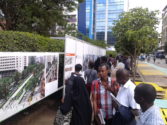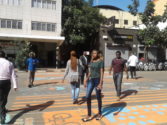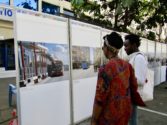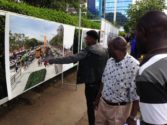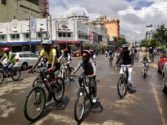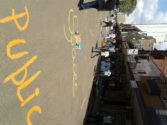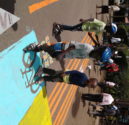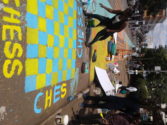January 20, 2017
(Re)imagining Nairobi
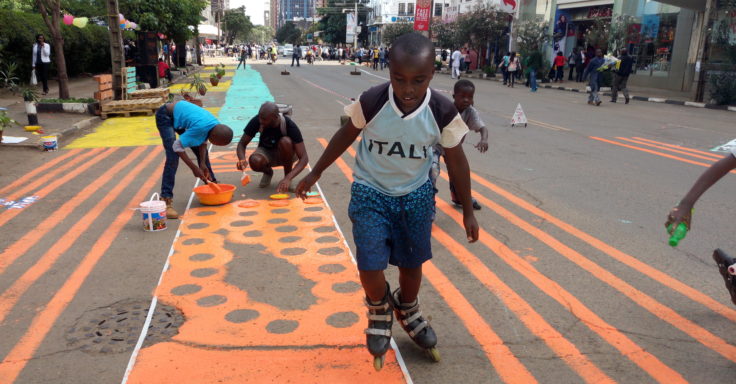
As we start the new year, we look to a transport future where cities around the world build equitable transit for all. Local communities must be able to imagine and participate in this change. In Nairobi, Kenya, people of all ages were able to do just that through a “car-free” streets weeklong event, creating beautiful streetscapes and public spaces for all modes of sustainable transport and looking at examples of successful BRT systems found all over the world.
For a few days this past December, Nairobians descended on the streets around the city’s Jeevanjee Garden to paint the roads, walk, cycle, skate or simply stroll leisurely while enjoying the street food, pop-up shops, and public events. This overnight transformation in the heart of downtown Nairobi—better known for traffic snarls, polluted air, and streets choked with parked cars—was organized by the Nairobi City County Government in partnership with the United Nations Human Settlements Program (UN-HABITAT). The event, known as Nairobi Placemaking Week, ran from November 30th to December 4th, 2016 and was envisaged as a time to celebrate Nairobi’s public spaces and community-led activities that are revolutionizing the use and experience of public spaces and the city at large.
Placemaking Week saw the full closure of Moktar Daddah Street as well as a temporary footpath extension and cycle lane along Muindi Mbingu Street. A DJ and a funny MC kept the crowd entertained while the young, in age and heart, danced the day away. The week also included a community dialogue about public space initiatives in the city and a cycle ride through the city center on December 4th, organized in partnership with Nairobi Critical Mass. According to analysis by UN-HABITAT, the event was a success for shops and restaurants along Moktar Daddah St, which saw higher turnover during the week.
Within the pedestrianized area, ITDP Africa, in partnership with UN-HABITAT, organized a Bus Rapid Transit (BRT) exhibit to inspire Nairobi residents and city authorities about the potential for better public transport and encourage the implementation of BRT in Nairobi. We live in a visual culture, and an exhibition is a simple tool that can reach out to a wide audience whose daily lives revolve around spaces and buildings. And a picture really does say a thousand words.
The exhibition showcased successful examples of BRT from across the world, starting with the newly launched DART BRT in neighbouring Dar es Salaam, Tanzania. In addition, there were photos of BRT systems in Yichang (China), Ahmedabad (India), Mexico City (Mexico), and Belo Horizonte (Brazil). Bringing it closer to home, the last two panels displayed renderings of Kenyatta Highway in Kisumu and Moi Avenue in Nairobi, showing how people-centered transformations of these streets can re-allocate more space for pedestrians, cyclists, and public transport. The Nairobi BRT rendering was inspired by the on-going work for Nairobi’s BRT Line 1, running on Mombasa Road and Waiyaki Way and passing through the central business district (CBD).
On December 18th, the BRT panels were also exhibited at the Pawa Festival on Koinange Street, also in the Nairobi CBD. We hope that in the future, Nairobi will host more car free days and build on the interventions of Placemaking Week to create better spaces for pedestrians and cyclists in the city center and continue to reimagine the city.

